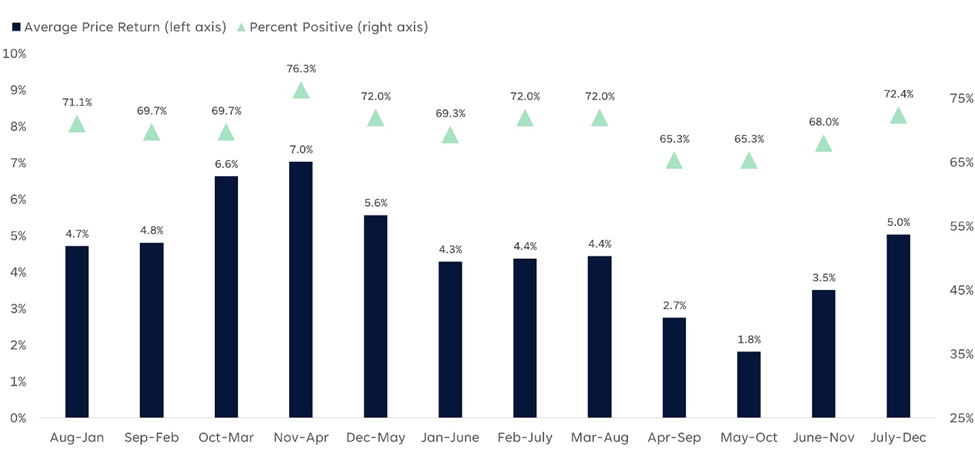Coffee Prices Decline Amid Increased Global Supply Forecasts
July arabica coffee (KCN25) is down -0.35 (-0.09%), while July ICE robusta coffee (RMN25) falls by -59 (-1.12%).
Impact of Increased Production Estimates on Coffee Prices
Today, coffee prices are trading lower due to larger global coffee supply forecasts. The USDA projects that coffee production in Honduras, Central America’s largest coffee producer, will rise by +5.1% year-over-year, reaching 5.8 million bags for the 2025/26 season.
Improved Inventory Levels Add Bearish Pressure
The inventory situation for coffee has also improved, contributing to bearish price factors. ICE-monitored robusta coffee inventories have surged to a three-month high at 44,188 lots. Similarly, arabica coffee inventories reached a two-and-three-quarter month high of 844,473 bags on Wednesday.
Demand Concerns Affect Pricing Trends
Demand concerns are weighing on coffee prices. Major global importers like Starbucks, Hershey, and Mondelēz International have indicated that the U.S.’s baseline 10% tariff on imports could elevate prices and adversely impact sales volumes.
Recent Price Movements and Forecasts
Last Tuesday, arabica coffee reached a two-and-a-half month high, while robusta coffee hit a five-week high due to worries about a smaller Brazilian coffee crop. On April 22, Rabobank forecasted a -13.6% year-over-year decline in Brazil’s 2025/26 arabica production, estimating it at 38.1 million bags due to dry conditions in key growing areas. The report from Cecafe indicated that Brazil’s March green coffee exports plummeted -26% year-over-year, totaling 2.95 million bags.
Weather-Related Factors and Regional Support for Prices
Weather conditions have further supported coffee prices. Last week’s rainfall totals in Brazil were below average, with the Minas Gerais region, a primary arabica growing area, receiving only 1.5 mm, which is 21% of the historical average.
Robusta coffee found some support on Tuesday, as Vietnam’s National Statistics Office reported a -9.8% year-over-year decline in coffee exports for January to April, totaling 663,000 metric tons.
Production Challenges in Vietnam
Robusta production in Vietnam faced challenges, with the 2023/24 crop down by -20% to 1.472 million metric tons, marking the smallest output in four years. Additionally, the General Statistics Office reported a -17.1% year-over-year dip in 2024 Vietnam coffee exports to 1.35 million metric tons. The National Statistics Office confirmed exports for January to April fell -9.8% year-over-year.
Global Coffee Export Trends
News of increasing global coffee exports adds a bearish outlook on prices. Conab reported a +28.8% year-over-year rise in Brazil’s 2024 coffee exports, hitting a record of 50.5 million bags. However, the ICO noted that global coffee exports from October to March declined -2.1% year-over-year to 67.73 million bags.
USDA Projections and Market Outlook
The USDA’s biannual report, released in December, presented mixed signals for coffee prices. The Foreign Agriculture Service (FAS) projects a +4.0% year-over-year increase in world coffee production for 2024/25, totaling 174.855 million bags. This includes a +1.5% rise in arabica production to 97.845 million bags and a +7.5% increase in robusta production to 77.01 million bags. Ending stocks are expected to drop by -6.6% to a 25-year low of 20.867 million bags, down from 22.347 million bags in 2023/24.
Separately, the FAS also noted on November 22 that Brazil’s 2024/25 coffee production would be lower than previously expected, at 66.4 million metric tons compared to an earlier forecast of 69.9 million metric tons. Brazil’s coffee inventories are projected to be 1.2 million bags by the end of the 2024/25 season, a -26% year-on-year decline.
Future Projections and Market Impacts
Looking ahead to the 2025/26 marketing year, Volcafe has lowered its Brazil arabica coffee production estimate to 34.4 million bags, reflecting a reduction of about 11 million bags from earlier projections following a crop tour. Volcafe anticipates a global deficit of -8.5 million bags for arabica coffee, wider than the -5.5 million bag deficit for 2024/25, marking a fifth consecutive year of deficits.
On the date of publication, Rich Asplund did not have (either directly or indirectly) positions in any of the securities mentioned in this article. All information and data in this article is solely for informational purposes. For more information, please view the Barchart Disclosure Policy.
here.
The views and opinions expressed herein are the views and opinions of the author and do not necessarily reflect those of Nasdaq, Inc.





